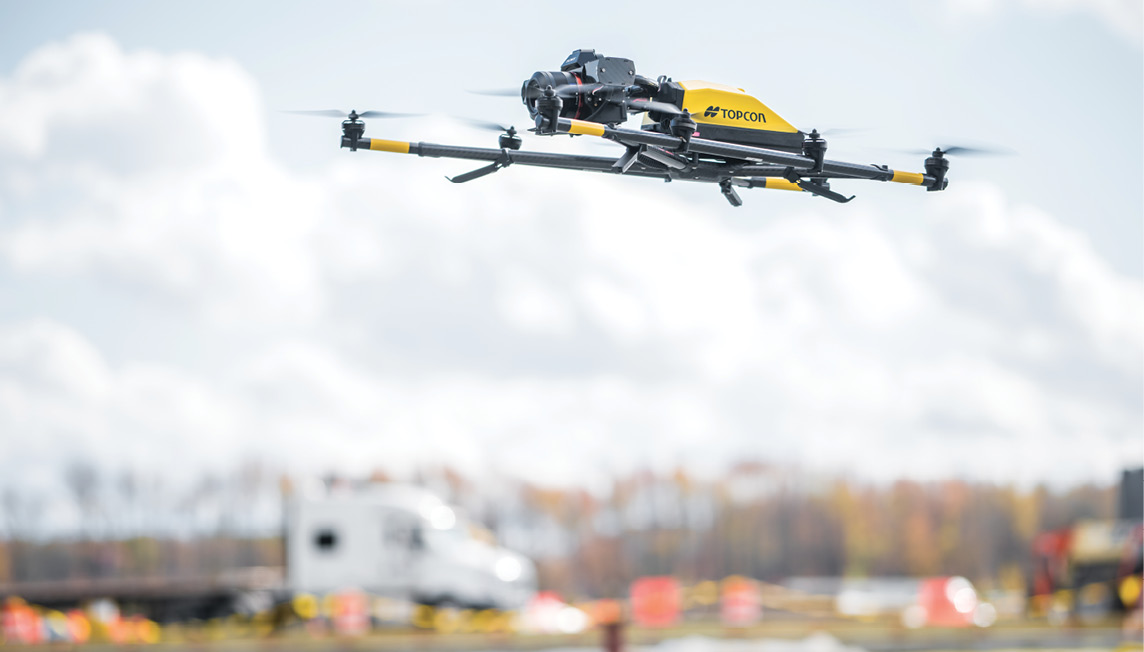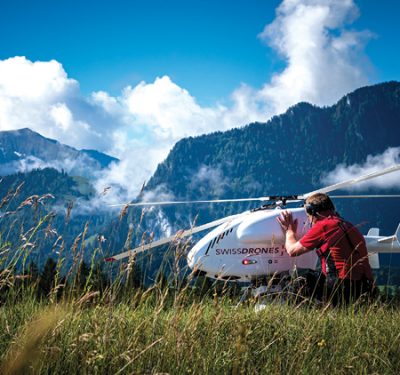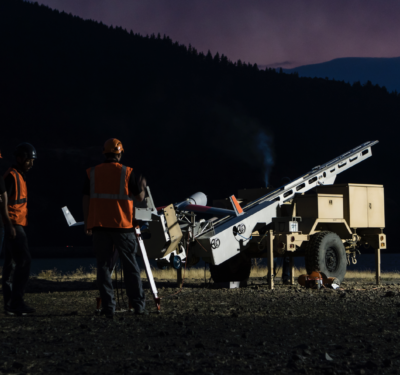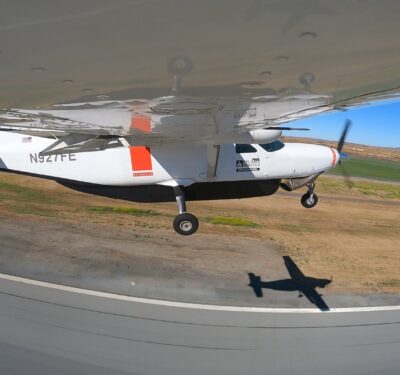
The FAA (Federal Aviation Administration) has been full of interesting news ever since the 2018 FAA Reauthorization Act became law late last year, which gave the governmental body plenty of new authority and clear direction to get viable unmanned aircraft systems (UAS) rules moving. We’ve seen Notices of Public Rulemaking for Small UAS (sUAS) Operations Over People and for Safe and Secure UAS, and we’ve watched the FAA react to a few rogue drone intrusions at airports worldwide. However, a very important request for information (RFI) didn’t get the attention it deserved because of all these competing events. In December 2018, the FAA released an RFI to industry asking about the feasibility of providing remote ID via a UAS Service Supplier (USS) to the FAA and, presumably, to other government agencies and commercial entities.
A UAS remote ID USS is interesting for several reasons. It’s the first time I know of that the FAA is outsourcing aircraft track identification. Until now, track ID for ADS-B (automatic dependent surveillance—broadcast), transponders and radar tracking has been a federal government responsibility that FAA leads with help from the Department of Defense (DOD) and Department of Homeland Security (DHS). True, ADS-B has brought about several commercial ADS-B rebroadcast services, but the feds have never relied on these services for positive ID of air traffic.
It’s also interesting that the FAA is expanding its successful experience with the Low Altitude Authorization and Notification Capability (LAANC) USS to provide remote ID as a commercial service. There is some precedence for this in a variety of manned air traffic management applications, but the FAA hasn’t charged for the ADS-B tracking broadcast used for manned aircraft traffic management. They provide that for free via the Traffic Integration Service—Broadcast (TIS-B). Again, commercial providers do offer ADS-B tracking as a service, but the government doesn’t use it for traffic management and offers a free alternative in TIS-B.
REMOTE ID RISING?
Perhaps the most interesting point about a remote ID USS is that the FAA apparently differentiates between a remote ID USS and Unmanned Traffic Management (UTM). Previously, the FAA made remote ID an implicit assumption under UTM, probably because remote ID is a crucial component of any UTM system.
Why would the FAA want to split remote ID from UTM? Rely on commercial providers rather than FAA/DHS/DOD for positive ID of air tracks? Possibly have commercial providers charge for UAS remote ID rather than having the FAA broadcast it for free, as they did for manned ADS-B?
In two words: infrastructure cost. Most folks (except the Air Force and DHS) have forgotten one of the main reasons the FAA supported ADS-B back in the late 1990s. The FAA saw ADS-B broadcasting as a way to get out of the air surveillance radar business (and foist that on the Air Force and DHS). Not only was ADS-B much more accurate, and therefore safer, than either radar or transponder tracking, but the FAA could cover most of the United States using ADS-B receiver/rebroadcast systems on existing Federal infrastructure. The FAA only needs tracking information for controlled airspace, Class A airspace that begins at 18,000 feet and Class B (sometimes C) airspace around airports.
Unlike the Air Force and DHS, the FAA never had the task to monitor all U.S. airspace for either enemy or terrorist aircraft. The FAA could execute its mission with ADS-B gear on existing airport infrastructure and just a few hundred antennas nationwide to cover aircraft transiting under instrument flight rules (IFR) in Class A airspace. As a result, DHS and the Air Force took over former FAA surveillance radars in the mid-2000s as the FAA began to increasingly rely on ADS-B for traffic management.
Several hundred ADS-B sites around the country might be enough to track manned aircraft operating above 18,000 feet or near airports, but it would take thousands (probably tens of thousands) of UAS remote ID antennas to cover small drones below 400 feet all over the country. It’s safe to assume the FAA won’t provide sUAS separation services like they do to manned aircraft flying IFR, but even just monitoring airport airspace for rogue drones would take thousands of remote ID antennas deployed around just about every American airport with a tower. Why on earth would the FAA want to pay for all that?
Well, they don’t, and a remote ID USS is a neat way to get around the FAA paying for a lot of drone remote ID while making remote ID services available not just to its traditional users—DOD, DHS and the airlines—but to law enforcement, commercial UTM providers and the more than 100,000 registered remote pilots in this country.
LTE OR BLUETOOTH?
It’s also tacit recognition of the probable winner of the remote ID tech wars—the LTE (4G mobile) phone companies. One of my first columns addressed why the LTE companies were going to dominate the drone C2 market: they’re the only folks with the ready infrastructure that covers nearly the entire country, plus the cybersecurity and bandwidth capacity to easily handle small drone C2 (including remote ID). True, LTE does have technical challenges when used for drone C2. LTE antennas are optimized to cover receivers on the ground, not flying at 400 feet. Flying drones see more LTE towers than ground vehicles do, making it difficult to determine the strongest signal and avoid constantly switching towers. LTE also doesn’t work where there’s no cell phone coverage. But while the industry is developing broadcast LTE, it won’t be ready for several years. Hence, a remote ID USS for ID via LTE makes a lot of sense for most of the country and LTE companies can provide services relatively cheaply.
If the FAA doesn’t go with LTE, it gets more expensive and complicated to deliver a comprehensive drone air surveillance picture. The two techs competing for broadcast ID are some variant of ADS-B and Bluetooth/Wi-Fi. ADS-B is a long shot given FAA/AT (Air Traffic) opposition to using ADB-B for small UAS. They think it will saturate the ADS-B frequencies and are probably correct, particularly if they broadcast at manned aircraft power (7-350 watts). Their objections fade if small drones broadcast at 0.5 watts, which still allows users to see drone tracks for several miles, but the opposition in FAA/AT is ingrained.
I think the FAA will go with Bluetooth/Wi-Fi if they decide to use broadcast remote ID. They both operate at just 0.5 watts and their receiver technology is everywhere. Broadcast ID requires requires a lot of infrastructure to cover everywhere small drones are likely to fly, to present a comprehensive air surveillance picture or even cover critical infrastructure and airports. Only the LTE companies have that kind of coverage and I don’t see them supporting broadcast ID as the sole solution for remote ID.
What I do see is a hybrid solution: LTE when coverage is available and Wi-Fi/Bluetooth when it isn’t. Technology exists to switch between the two modes when a drone flies outside cellular coverage. With a hybrid approach, law enforcement on the North Slope of Alaska can still query a suspicious drone via their smartphone’s Bluetooth antenna but the vast majority of American law enforcement will simply receive remote ID via an app from an LTE remote ID USS. DOD, DHS, law enforcement, etc. can still set up broadcast receivers around key sites, but they’ll be the exception, not the rule.
All in all, I think it’s a great idea!






